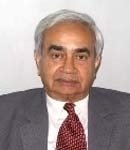India Shining?
12 Apr, 2004 · 1361
P. R. Chari says that the new catchphrase “India Shining” masks systemic faults in the Indian polity
It started off as an election slogan, but has now become something of a national joke, with the spin masters, committed bureaucracy and their cohorts in the media, academia, business groups, and NRI community making feverish efforts to establish that the slogan is the truth.
Every statistic publicised that India is shining can be contradicted. The most ubiquitous statistic cited is that economic growth reached over 10 percent in the third quarter and would cross 8 percent over the entire year. But, these growth figures have been calculated over a base of below 5 percent growth in the previous financial year due to precipitate shortfalls in the agricultural sector; hence the current growth rates are grossly inflated. Economic growth over the six year period of NDA rule would average below 6 % annually. Foreign exchange reserves have risen to nearly $ 110 bn. So has the national debt. Credit rating agencies abroad like Moody’s are cautious about India’s long term prospects; consequently foreign direct investment remains miniscule compared to the size of the Indian economy.
In truth this debate regarding India’s economic prospects rests on individual convictions. Many see the glass as being half full, others as being half empty. Wisdom requires the glass to be perceived as a whole, taking into account its shining and dark aspects. What is undoubtedly recognizable is a new mood of confidence in the younger people who have vital stakes in India’s future. Large numbers are returning to India from abroad. Their training and skills would significantly contribute to modernising the economy. Outsourcing has become a problem for the United States, and the belief that India raises anxieties in the world’s sole superpower is adding to national self-confidence. The tragedy is that while the average Indian population is becoming younger, its leadership is becoming more and more geriatric.
That said, it is also undeniable that the ‘feel-good’ factor is restricted to the middle and high income urbanised social classes, especially in metropolitan cities. Unfortunately, the economic benefits of the IT revolution have yet to trickle down to the huge bulk of India’s population that lives in small towns and rural areas. The numbers of the abysmally poor remains significantly large, unemployment is a real issue for them, and their desperate migration to the cities looking for jobs exposes them to the worst forms of exploitation. For them the slogan of India shining is only a cruel farce.
In truth, this unrolling of statistics and slogan mongering is really an election ploy. Governance has been deified as the BJP smells an issue to exploit the anti-incumbency factor, with most States still being ruled by other parties. The BSP [Bijli, Sadak, Pani] factor has been stressed to highlight aspects of governance where the incumbent parties have not delivered. The important issues to adjudge governance must include the state of public health and educational institutions, maintenance of law and order, public safety and so on. What is the BJP’s record in the states that it rules over and the Centre?
In truth, the “India Shining” sloganeering masks the systemic factors that are critical to the Indian polity, encapsulated in the 3 Cs, vital to the commonweal viz. Communalism, Corruption and Criminalization of the governing processes. These have increased significantly over the last six years, as even the slightest introspection will reveal. Instances to establish this verity can be multiplied but one in each category will be adequate.
Take Communalism. What happened in Gujarat was shameful. What did not happen is even more shameful. Narendra Modi remains the Chief Minister. None of his bureaucrats have been punished for dereliction of duty. A pliant judiciary has systematically acquitted the few rioters, arsonists, looters, rapists and murderers prosecuted. An administration that had totally failed to protect the lives and property of its citizens continues in office.
Corruption? Perhaps the greatest regular feature of the last six years is the scams and public swindles that came to light. Stock market, divestment, UTI, topped by the Telgi scandal. Transparency International has consistently placed India near the bottom of the countries listed in its corruption index. This has not caused any ripples or discomfort to the State.
Finally, the Criminalization of politics. The Election Commission’s directive that candidates reveal the criminal cases pending against them is a salubrious step. What this directive has revealed is the rogue’s gallery that will be contesting the elections all over the country but in large numbers from the benighted states of Uttar Pradesh and Bihar. From their ranks will come our legislators, and many will be ensconced in Cabinets at the State and Central levels. What kind of governance will they provide to the country?
Can “India Shining” occur side by side with this quantum growth in the 3 Cs?


